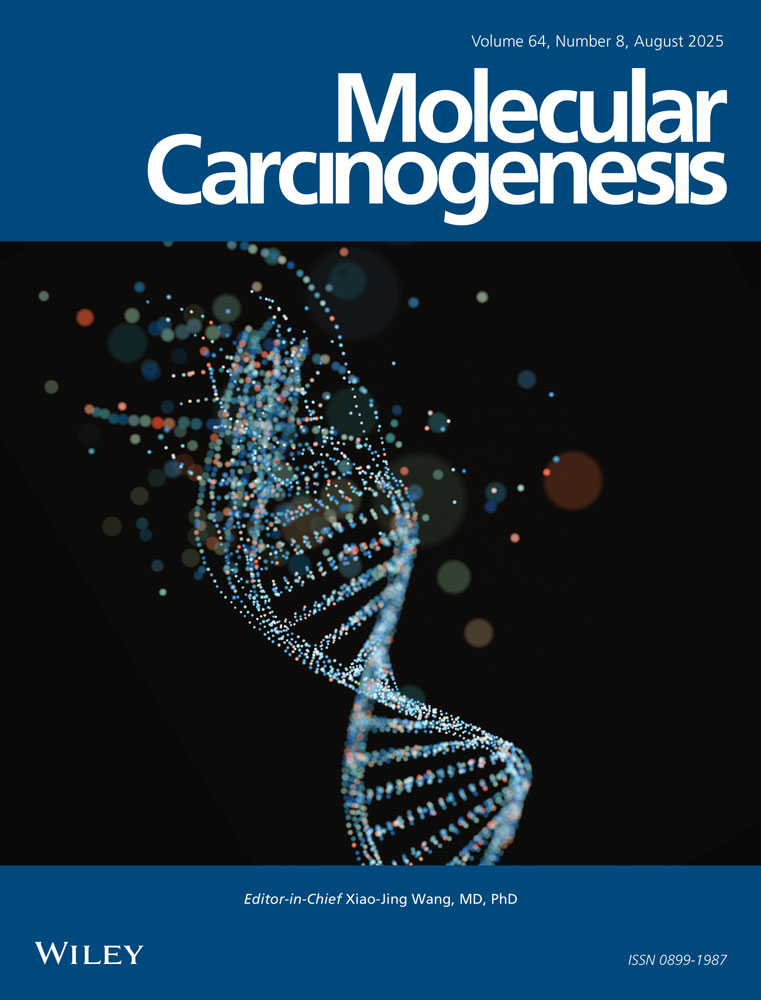Evidence that initiated keratinocytes clonally expand into multiple existing hair follicles during papilloma histogenesis in SENCAR mouse skin
Abstract
We have previously shown that the precursors of cutaneous papillomas in SENCAR mice initiated with 7,12-dimethylbenz[a]anthracene and promoted with 12-O-tetradecanoylphorbol-13-acetate are focal hyperplastic lesions that we refer to as squamous cell hyperplastic foci (SCHF). Ha-ras gene codon 61 mutations were frequently found in SCHF, providing evidence that these lesions represent clones of initiated cells. We report here the pathogenesis of multiple hair follicle involvement in more advanced SCHF and describe the role of the hair follicle in papilloma histogenesis. Detailed histological evaluation of 83 SCHF and 25 early papillomas revealed a morphological continuum from the least developed SCHF, involving only one hair follicle, to advanced SCHF and early papillomas, which involved more than 10 hair follicles. These results provide evidence of the recruitment of additional hair follicles as SCHF progress. In advanced SCHF and early papillomas the bulk of the epithelial component in all cases consisted of several markedly hyperplastic adjacent hair follicles, whereas the involved interfollicular epidermis (IFE) was generally less hyperplastic. All of the hair follicles involved in SCHF appeared to have been preexisting, based on their pattern of spacing, that they were consistently normal appearing below the level of the sebaceous glands, and that they were in the same phase of the hair cycle as surrounding, uninvolved hair follicles. Also, no evidence of follicular neogenesis was observed in serially sectioned SCHF, and coalescence of smaller lesions was rare. To investigate whether the involvement of multiple hair follicles in SCHF was due to expansion of initiated cells into existing hair follicles or, possibly, to a paracrine mechanism, we analyzed different levels of three serially sectioned SCHF and one early papilloma for Ha-ras mutations. These analyses revealed cells with Ha-ras gene codon 61 mutations at multiple levels that involved different hair follicles. Overall, our results provide evidence that as initiated cells clonally expand, they spread across the IFE and populate the upper permanent portions of existing hair follicles. The abnormal proliferation of the infundibula of the hair follicles involved in SCHF appears to give rise to most of the epithelial component of papillomas. Mol. Carcinog. 20:151–158, 1997. © 1997 Wiley-Liss, Inc.




